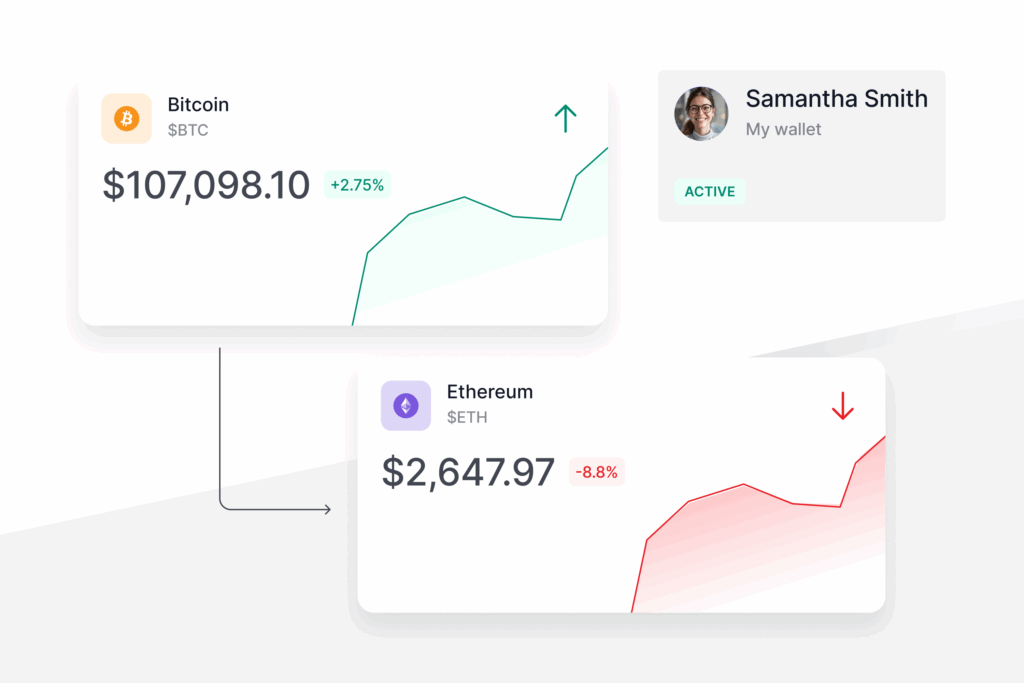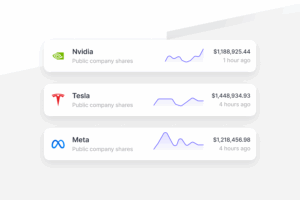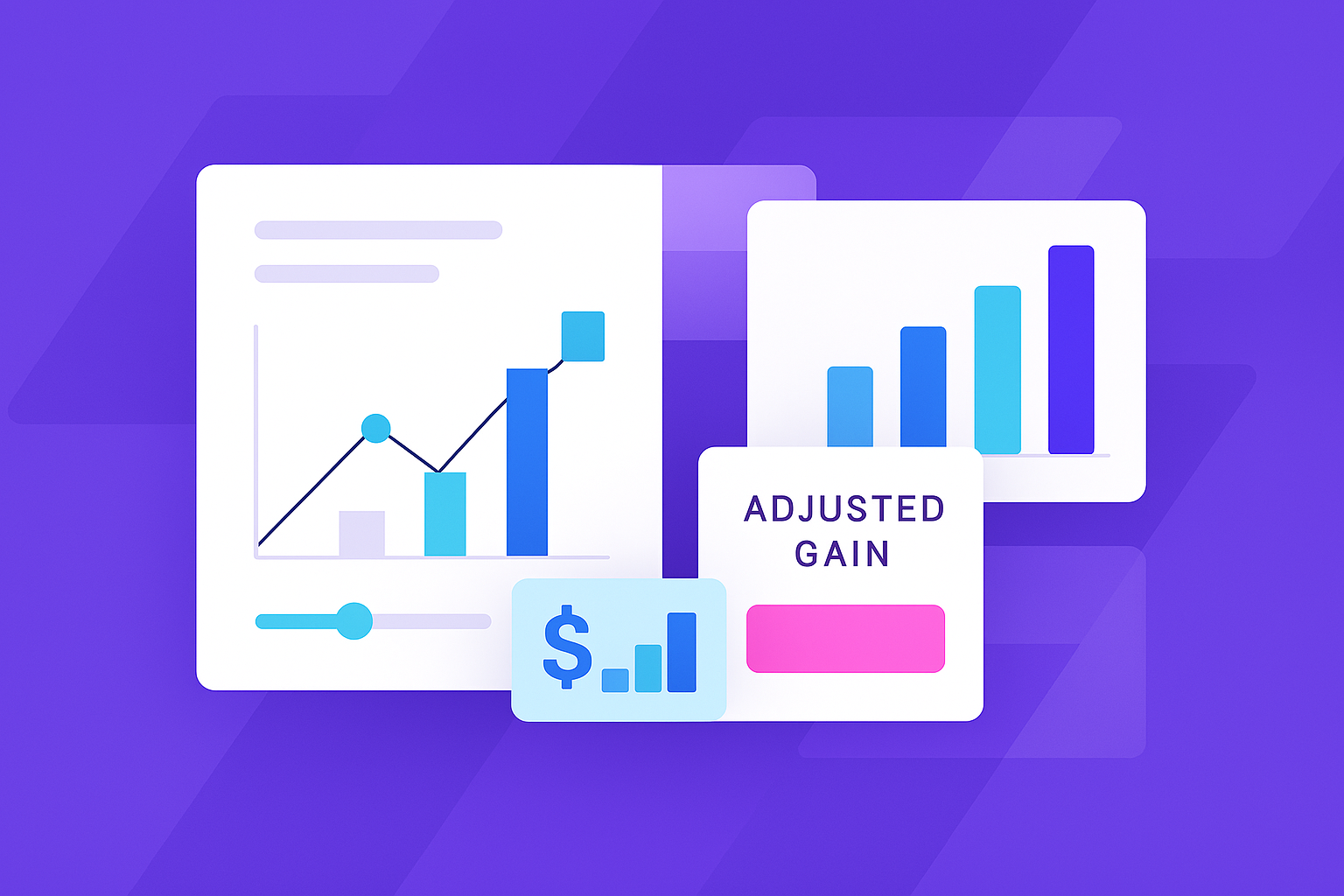
FEATURED ARTICLE
Tax Planning for Realized Gains and Ordinary Income
Tax planning strategies for realized gains and ordinary income

Tax planning strategies for realized gains and ordinary income


Key Takeaways
At age 45, Alice found herself in a situation that many people dream of—and many people dread at the same time. On the one hand, she had successfully built a substantial stock portfolio over the years—one particular stock (Nvidia), she’d purchased for practically nothing in her early thirties, had soared to eight figures in value. On the other hand, selling the stock outright would trigger a massive capital gains tax.
Alice was pulling in significant income from her consulting business, placing her in a high tax bracket. She didn’t need more cash flow right now—she preferred to let her money grow and defer taking any big personal payouts until she needed them.
This led her to consult with a financial advisor who suggested something she’d never heard of before: a Spigot NIMCRUT.
If you’re in a situation like Alice—holding highly appreciated assets, seeking tax efficiency and pondering how to structure your income around when you need it —this article is for you. Let’s walk through the basics of CRUTs and Spigot NIMCRUTs so you can see exactly why a Spigot NIMCRUT might be the solution you never knew existed.
Before we get into the magic of the spigot, it helps to understand the basic concept of Charitable Remainder Unitrusts, or CRUTs. A CRUT is a trust that allows you to transfer assets (often highly appreciated assets) into the trust and sell and reinvest those assets without triggering capital gains taxes). The trust then pays you (or another beneficiary) income over time, and eventually gives whatever remains to a charity you designate.
There are a few varieties of CRUTs, but the simplest form is a Standard CRUT. This type pays you (or your beneficiary) a fixed percentage of the trust’s value every year. If you set it up as a 5% CRUT, for example, the trustee recalculates the trust’s value each year—if the trust is worth $1 million, it pays you $50,000 that year. If next year it’s $1.1 million, you get $55,000. It’s predictable, but it doesn’t give you much flexibility to skip or defer payments if you don’t need them.
NIMCRUTs (short for Net Income with Makeup Charitable Remainder Unitrusts) flip that script a bit. Instead of giving you that fixed percentage no matter what, a NIMCRUT only distributes the lower of (a) its stated payout percentage, or (b) the actual net income the trust earns. If the trust earns less than the stated payout, it doesn’t dig into principal to make up the difference. That shortfall, however, is tracked in a “makeup account.” In future years—if and when the trust generates surplus income—the trust can pay out those prior shortfalls.
For example, imagine a 10% NIMCRUT that invests in assets that generate very little current income, such as growth stocks. In a year, it might earn only 2% in dividends and interest, so it pays you 2%. The remaining 8% you would have received under a standard CRUT isn’t paid—but it’s noted as a “makeup” amount for future years. Later, when the trust sells an asset at a hefty capital gain and realizes income that is 15% of the total trust value, the trust can distribute the standard 10% it owes you for that year plus some or all of the owed distributions from previous years from the makeup amount. If you wanted to defer distributions for a while, maybe you’re in a high tax bracket currently or if you don’t need the money and just want the assets to grow tax free, a NIMCRUT’s net-income rule can be your friend.
Take that net-income concept a step further, and you reach the Spigot NIMCRUT—the kind of trust that effectively lets you turn the faucet of income from the CRUT on or off at your discretion. The principle is straightforward: if your trust is structured to generate no net income in certain years, you don’t receive distributions in those years. Meanwhile, any “unpaid” distribution amounts accumulate in that makeup account. Then, when you flip the spigot “on,” you can produce enough income to catch up on those prior distribution shortfalls.
But how do you ensure the trust doesn’t produce accidental income in the off years? The best approach is to have the trust invest through an LLC that it fully owns, critically only distributions from the LLC to the trust count as “trust income.” The LLC might earn income from selling assets or receiving dividends. But as long as the LLC doesn’t distribute that income to the trust, there’s no current income for the trust to pay out. You effectively keep the faucet turned off and defer distributions for as long as you want.
For Alice, this was the aha moment. It meant she could shift her Nvidia stock holdings into the trust, sell them, reinvest them and let them grow without triggering an immediate capital gains tax, and then—because she still pulled a healthy consulting income—she could choose to distribute zero from her trust for the next decade. By the time she planned to retire, she’d open the spigot and collect larger distributions while presumably in a lower bracket, all while the trust had spent that time compounding tax-free.
Even if the trust’s net asset value goes up significantly, you’re not forced to distribute that appreciation until you choose to. Compare that to a standard CRUT, which would pay out a set percentage every year, forcing you to pay taxes on that distribution every year. Over 10 or 20 years, the difference from compounding and reinvesting those tax dollars can be massive. It’s much like having a personal retirement account, but with no mandatory age-based distributions and no early withdrawal penalties.
Maybe you know you’ll need a bigger infusion of cash for your child’s college costs in five years. Maybe you’ll want to buy a vacation home in a decade, or you suspect you may have significant medical costs at some point. With a standard CRUT, you don’t get to say, “Skip paying me for a while, and then pay me double later.” But with a Spigot NIMCRUT, that’s essentially what the trust can do—as long as the net income arises in the year you need it.
A lot of high earners (think business owners, professionals in peak career years, or even pro athletes) end up paying top dollar in taxes at the worst possible time. If you’re one of them and you sell a large chunk of appreciated assets during these high-income years, you might get hammered by the combined effect of federal and state taxes. But if you can arrange to wait until you’re in a lower tax bracket—say after you retire or move to a lower-tax state—you’ll keep more of the trust distributions.
If you’re learning about CRUTs for the first time, you may wonder: “Wait, what about Flip CRUTs, or just a Basic NIMCRUT?” Let’s briefly explore these differences.
In a sense, a Flip CRUT is a simpler approach if you only need to defer income for a single milestone—like the sale of a private business. A Spigot NIMCRUT, by contrast, allows indefinite on-off control. If that’s the kind of dynamic approach you want, it’s typically worth the extra complexity and cost.
Let’s dive deeper into Alice’s specific journey to illustrate how the math might work out.
Alice decides to create a lifetime NIMCRUT, it will last till she passes away, with a 8.3% payout rate. She names a wildlife protection nonprofit as the charitable beneficiary (though she includes language allowing her to switch charities later, just in case).
She transfers $11 million of stock (originally purchased for $300k) into the trust. Selling outside the trust would have meant recognizing ~$11m in capital gains. In her combined federal and state bracket, that might be a ~$4m tax bill. But inside the trust, it sells tax-free. Now the entire $11 million is reinvested inside the trust.
The trust invests in a combination of:
For the first 10 years, the LLC doesn’t distribute anything to the trust (effectively turning the spigot off). The trust thus has no net income. Alice, in her mid-50s, still has a lucrative job as a consultant. She lives comfortably without needing trust distributions.
Assume over 10 years, the trust’s assets grow by around 10% annually. The principal more than doubles to $26 million. Remember, all of this growth is effectively tax-free inside the trust.
Meanwhile, each year, the trust’s 8.3% payout target is owed but because net income is zero, it pays out $0, adding those missed distributions to the “makeup account.” By year 10, that makeup amount is $15.6m dollars, just waiting to be unlocked when she needs it.
At 65, Alice retires from consulting, dropping into a lower tax bracket. She instructs the LLC (through the trustee) to start distributing cash to the trust. Now the trust finally has net income.
Because there’s a backlog in the makeup account, the trust can pay her not just the current 8.3% but also an additional chunk to make up for prior shortfalls. She could receive a $15.6m large lump sum in year 11 to celebrate retirement or buy a vacation home. Or she could spread out the big distributions over several years—maybe matching them to her spending needs.
Either way, she’s likely paying significantly less in taxes now compared to what she would have paid had she sold her assets and taken the distributions during her peak earning years.
At the end of her life—whatever remains in the trust goes to the nonprofit.
You might wonder: “Okay, but how much more does a spigot approach actually yield?”
Our analysis found impressive results. Over Alice’s life, a Spigot NIMCRUT could provide an additional $65 million in after-tax income. That’s 140% more than not using the strategy. That’s because every extra dollar left in the trust grew faster when not eroded by annual distributions (and the accompanying taxes). Meanwhile, the charity ends up with $31m – a true win-win.
In other words, if you’re comfortable waiting a while for your trust to pay out, you can come out significantly ahead of the game compared to other CRUT strategies. And that’s precisely why spigot NIMCRUTs are known in estate planning circles as the ultimate “wait now, feast later” charitable vehicle.
Absolutely. NIMCRUTs are codified in the tax code and recognized by the IRS. The “spigot” dimension is simply maximizing the net-income feature.
It’s true a spigot NIMCRUT can require more upfront legal and administrative work and costs (fortunately Valur minimizes this). You might form an LLC, carefully craft trust language, and pay for annual tax filings. If the trust is large enough (often in the millions), those costs become less of a deterrent. If you only have a small sum, a simpler standard CRUT or basic NIMCRUT might be more cost-effective.
Yes. When you create any CRUT, you receive an immediate charitable income tax deduction for the present value of the remainder projected to go to charity. The exact amount depends on the payout rate, your age (if it’s for your life), or the trust term. Higher payout rates yield lower deductions because more money is expected to go to you. But you do still get a deduction. It can offset up to a certain percentage of your adjusted gross income, with a five-year carry forward for any excess.
If there’s a central takeaway from Alice’s story and the principles behind a Spigot NIMCRUT, it’s this: defering taxes and controlling when you recieve distributions (and pay taxes) is a game changer ****. When you want to avoid a large capital gains bill, when you’d like to manage your tax bracket, and when you want to grow your assets as much as possible before retirement—having a Spigot NIMCRUT can be a game-changer.
If you check some of these boxes, it’s worth further exploring a Spigot NIMCRUT.
We’ve built a platform to give everyone access to the tax and wealth-building tools typically reserved for wealthy individuals with a team of accountants and lawyers. We make it simple and seamless for our customers to take advantage of these hard-to-access tax-advantaged structures. With Valur, you can build your wealth more efficiently at less than half the cost of competitors.
From picking the best strategy to taking care of all the setup and ongoing overhead, we make things simple. The results are real: We have helped create more than $3 billion in additional wealth for our customers. If you would like to learn more, please feel free to explore our Learning Center. You can also see your potential tax savings with our online calculators or schedule a time to chat with us!